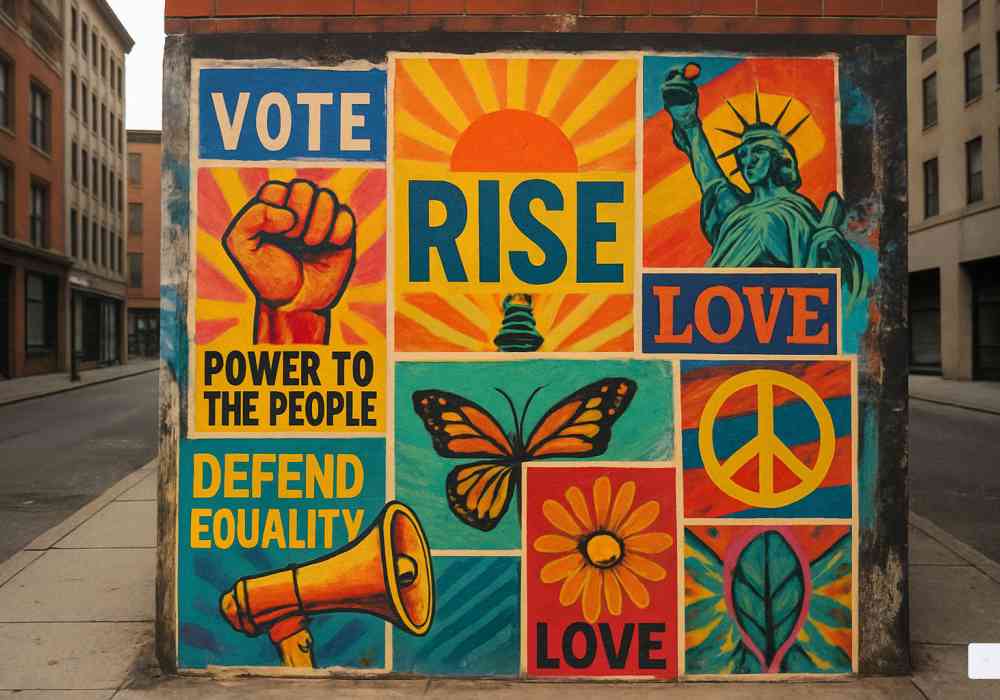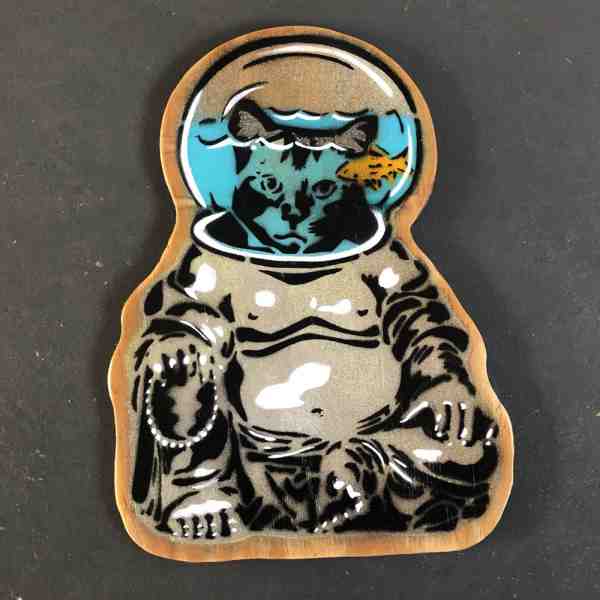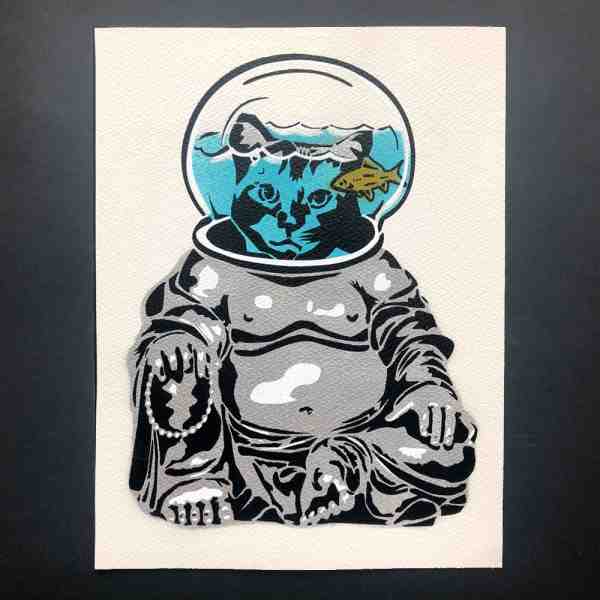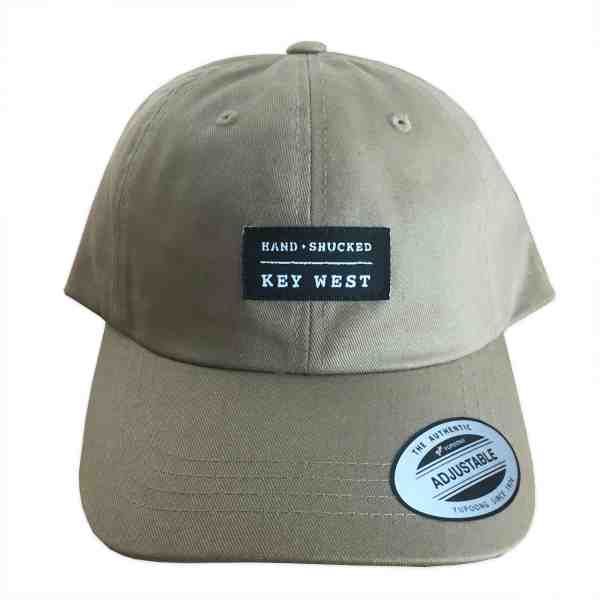The Legal Lowdown on Wheat Pasting Street Art
The Street Art Question Every Artist Needs Answered
Is wheat pasting illegal? The short answer is: it depends on where you paste and whether you have permission. Here’s what you need to know:
- Public property (utility poles, traffic signs): Usually illegal - fines range from $50 to $2,500
- Private property without permission: Illegal - considered vandalism or trespassing
- Private property with written consent: Legal in most jurisdictions
- Designated posting areas: Often legal with proper permits
Wheat pasting sits in a legal gray zone that confuses many artists. While the flour-and-water paste itself is harmless and biodegradable, unauthorized posting can lead to hefty fines and legal trouble. Some cities like San Francisco have fined campaigns as much as $120,000 for illegal street posting.
The legality often comes down to three factors: location, permission, and local ordinances. What’s legal in Montreal (thanks to the Singh ruling) might get you arrested in New York. What flies on a construction barrier with owner consent could land you in court if pasted on a bus stop.
I’m Chris Higgins, and after over a decade as a commercial designer in Key West, I’ve seen how is wheat pasting illegal questions can make or break street art campaigns. My experience helping artists steer the creative and legal sides of public art has taught me that understanding the rules is just as important as mastering the paste recipe.
Wheat Pasting 101: History, Materials & Purpose
You might be surprised to learn that wheat pasting isn’t some modern street art invention. This technique actually has ancient roots stretching back to Egypt, where early civilizations used similar adhesive methods to apply hieroglyphics to walls. Pretty wild to think your guerrilla art campaign shares DNA with pharaohs, right?
The practice really took off during the 19th century when commercial billposting became the go-to way for advertisers to plaster their messages across growing cities. But the wheat pasting we know and love today? That explosion happened in the 1960s punk rock scene.
Bands and political activists finded they could bypass traditional media entirely by wheat-pasting concert posters and radical messages directly onto public surfaces. It was cheap, accessible, and gave artists complete control over their message - no editors, no gatekeepers, just pure creative expression.
The technique goes by many names depending on where you are: flyposting, poster bombing, sniping, billposting, broadsides, or simply postering. But whether you’re in Key West or Montreal, the core concept stays the same - using simple adhesive to stick paper artwork where people can’t help but see it.
Before you start planning your campaign though, is wheat pasting illegal depends heavily on location and permission. The history is fascinating, but the legal reality is what matters for your project.
How Wheat Paste Is Made
Here’s where wheat pasting gets beautifully simple. You need just three basic ingredients: wheat flour (white flour works best), water, and optionally some sugar for extra stickiness.
Start by mixing one cup of flour with one cup of cold water until it looks like pancake batter. Then comes the tricky part - slowly add six to seven cups of boiling water while stirring continuously over low heat for 10-15 minutes. The mixture should thicken to resemble thin papier-mâché paste.
Let it cool completely before use - hot paste will wrinkle your posters and potentially burn your hands. One cup of finished paste will handle about 20-22 posters, depending on their size.
Storage is straightforward: the paste stays good for up to five days at room temperature, or about a week if you refrigerate it in a sealed container. After that, it starts fermenting and develops quite an aroma (trust me, you’ll know when it’s gone bad).
The non-toxic, biodegradable nature of wheat paste makes it environmentally friendly compared to synthetic glues, though that doesn’t automatically make your posting legal.
Why Artists & Brands Love It
Wheat pasting offers some serious advantages that make it attractive for both underground artists and legitimate marketing campaigns.
Cost-effectiveness is probably the biggest draw. A wheat-pasting campaign hitting 20 locations costs less than half the price of a single billboard. When your materials are literally flour, water, and paper, the budget math works in your favor.
The eye-catching impact can’t be ignored either. Multiple posters clustered together create visual dominance that stops people in their tracks. Unlike billboards floating high above, wheat paste puts your message at street level where people actually walk and look.
Accessibility makes wheat pasting appealing to artists who can’t afford expensive equipment or don’t have spray-painting skills. Anyone can learn the basic technique in minutes - it’s more about planning and execution than artistic ability.
For brands trying to reach younger demographics, wheat pasting taps into that authentic street art aesthetic that resonates with people who’ve grown skeptical of traditional advertising. It feels grassroots and genuine, which is marketing gold these days.
The technique also allows for culture jamming - using familiar imagery or locations to subvert expectations and make social commentary. This flexibility makes wheat pasting a powerful tool for both artistic expression and commercial messaging.
Is Wheat Pasting Illegal? Understanding the Basics
Here’s where things get tricky. Is wheat pasting illegal? Well, it’s not a simple yes or no answer - it’s more like asking “is driving illegal?” The answer depends on where you’re driving, whether you have a license, and if you’re following the rules of the road.
The legality of wheat pasting comes down to property rights and local laws. Most cities have specific rules about what can be posted where, and slapping up posters without permission usually breaks these rules - no matter how eco-friendly your flour-and-water paste might be.
Now, the First Amendment does protect your right to free speech, including political messages. But here’s the catch: you can say what you want, but that doesn’t give you the right to say it on someone else’s wall without asking first. It’s like having the right to sing - that doesn’t mean you can set up a stage in your neighbor’s backyard.
Municipal codes vary wildly from city to city. What might get you a friendly warning in one town could land you with a hefty fine in another. Understanding your local ordinances isn’t just smart - it’s essential for any artist or brand considering a wheat-pasting campaign.
“is wheat pasting illegal” on Public Property
Unfortunately, is wheat pasting illegal on public property? In most places, yes. Cities generally don’t appreciate unauthorized artwork on their utility poles, bus stops, or buildings - even if your paste recipe is completely biodegradable.
Public property violations typically include posting on utility poles and traffic signs, bus stops and transit shelters, public buildings, sidewalks, and park structures. These violations usually fall under vandalism laws, criminal mischief charges, or graffiti ordinances.
The fines can sting. Most cities charge anywhere from $50 to $2,500 per violation, depending on the location and your local graffiti ordinances. San Francisco’s Department of Public Works, for example, issued 42 citations in one fiscal year for illegal postings, with fines ranging from $50 to $500 per sign plus a 50% removal surcharge.
Infamous 2001 case where San Francisco slapped a Linux marketing campaign with a $120,000 fine for unauthorized street graffiti? That eye-watering penalty sent shockwaves through the guerrilla marketing world and proved that cities mean business when it comes to enforcement.
“is wheat pasting illegal” on Private Property
Private property is a whole different ballgame. Is wheat pasting illegal on private property? Only if you don’t have permission. With written consent from the property owner, you’re generally in the clear. Without it, you’re looking at trespassing and vandalism charges.
Smart property owners who allow wheat pasting usually want written agreements spelling out what you can post and for how long, proof of liability insurance, cleanup deposits, and the right to approve your content before it goes up. It might seem like a lot of paperwork, but it beats dealing with legal trouble later.
Some savvy landlords have turned this into a business opportunity. They lease their construction barriers or vacant storefronts for legal posting, creating revenue while giving artists legitimate spaces to showcase their work. It’s a win-win that keeps everyone on the right side of the law.
The key takeaway? Always get permission in writing when working on private property. A friendly handshake agreement won’t protect you if things go sideways, and lease agreements often include clauses about maintaining the property’s appearance.
Navigating Laws, Permits & Notable Rulings
The legal world of wheat pasting is like a patchwork quilt - every city seems to have its own rules and penalties. What might earn you a friendly warning in one place could result in thousands of dollars in fines just a few miles away.
The most groundbreaking case happened in Montreal back in 2010. A street artist named Singh challenged the city’s posting restrictions, and the Quebec Court of Appeal made a remarkable ruling. They decided that wheat pasting was actually legal in areas where the city hadn’t provided enough official bulletin boards for public use. The Singh decision (2010 QCCA 1340) essentially said cities can’t ban postering unless they offer reasonable alternatives.
But here’s the catch - this ruling only applies to Montreal and Quebec. Don’t expect it to protect you in Brooklyn or Los Angeles. Other cities have gone in completely different directions.
Take the UK, for example. The Clean Neighbourhoods and Environment Act 2005 cranked up the heat significantly. Maximum fines jumped from £1,000 to £2,500, and they introduced £50 on-the-spot penalties that enforcement officers can hand out immediately. Even more interesting, the Act makes event organizers liable if their promotional information appears on illegal posters.
The penalties across major cities tell quite a story. New York starts relatively gentle with $50-$350 for first-time offenders, but repeat violations can hit $1,000. Los Angeles takes a tougher stance right from the start, with $100-$500 initial fines that double for repeat offenses. They also hold property owners liable, which creates interesting dynamics.
San Francisco has perhaps the most complex system. First offenses range from $50-$500 plus a 50% removal surcharge, but repeat violations can cost property owners $100-$2,500 per day. The city splits enforcement between multiple agencies, which can make navigating their system particularly tricky.
Meanwhile, Montreal remains the outlier where posting is often completely legal thanks to the Singh ruling, though specific rules still vary by district.
When Wheat Pasting Becomes Legal
The good news is that plenty of legitimate opportunities exist for legal wheat pasting campaigns. Construction companies have finded that their plywood barriers are valuable advertising real estate. Many now lease these high-visibility surfaces to advertisers, creating win-win situations.
Cultural corridors represent another growing opportunity. Cities like Miami and Austin have designated specific neighborhoods where street art is not just tolerated but actively encouraged. These areas often become tourist attractions themselves, making them valuable for both artistic expression and marketing.
Universities and community centers maintain designated bulletin areas where posting is generally permitted. The rules vary significantly between institutions, but these spaces offer legitimate placement opportunities for appropriate content.
Event boards in downtown areas provide another legal option. Many municipalities maintain official posting areas specifically for community announcements and cultural events.
Required Permissions & Documents
When you’re planning a legitimate wheat pasting campaign, proper documentation becomes your best friend. Start with written property owner consent that clearly specifies poster size limits, any content restrictions, and how long the posters can remain up.
Municipal permits vary widely by city, but many require temporary sign permits for any posting campaign. The application process usually takes 2-3 weeks, so plan accordingly.
Liability insurance certificates protect property owners from potential damage claims. Most commercial property owners won’t grant permission without seeing proof of coverage.
Finally, make sure your installation crew carries proper identification and contact information. If authorities question your team during installation, being able to immediately produce permits and documentation can prevent citations and legal headaches.
The key to successful legal wheat pasting is treating it like any other professional project. Keep copies of all permits and agreements on-site during installation. This professional approach not only keeps you legal but often opens doors to future opportunities with property owners who appreciate working with responsible artists and marketers.
Best Practices for a 100% Legal Wheat-Pasting Campaign
Planning a completely legal wheat-pasting campaign takes patience, but it’s absolutely worth the effort. After years of helping artists steer these waters in Key West and beyond, I’ve learned that preparation beats improvisation every single time.
The foundation of any successful campaign starts with thorough location scouting. We spend weeks walking neighborhoods, identifying potential sites, and researching who actually owns what. Property records might seem boring, but they’re your best friend when you need to track down the right person for permission. Construction permits are also goldmines - they often list contact information for property managers who might be open to temporary art installations.
Written permission is absolutely non-negotiable. A handshake deal or verbal “yeah, sure” won’t protect you if authorities show up. We use simple agreements that spell out poster sizes, what content is okay, when we’ll install, and when everything gets removed. Property owners appreciate the professionalism, and it protects everyone involved.
Many cities require temporary signage permits for any posting, even with property owner consent. The rules vary wildly - some places only care about commercial content, while others want permits for everything. A quick call to your local planning department can save you major headaches later.
Even legal campaigns often work at night for practical reasons. Crew safety becomes crucial when you’re working in low light conditions. Proper lighting, reflective gear, and emergency contacts aren’t just smart - they show authorities that you’re running a professional operation, not some sketchy midnight mission.
Eco-friendly cleanup builds goodwill that pays dividends. Since wheat paste is biodegradable, the environmental impact is minimal. But committing to remove all materials after your campaign period shows respect for the community and property owners. We’ve had landlords specifically request us for future projects because they know we’ll leave their space clean.
Modern campaigns benefit hugely from QR codes linking to digital content. This bridges the gap between street-level impact and online engagement. You can track how many people actually interact with your work, which helps justify the effort and provides valuable data for future campaigns.
For our “Lost Cat” and “Hungry Manatee” series, we finded that clustering posters in fewer legal locations creates more visual impact than scattering them illegally. The concentrated approach also makes logistics simpler and keeps legal risk at zero. Plus, when people see multiple pieces together, they spend more time engaging with the work.
Avoiding Common Legal Pitfalls
Even well-intentioned campaigns can stumble into trouble. The most dangerous mistake is ignoring “Post No Bills” zones. Many cities designate specific areas where all posting is prohibited, period. Sometimes these zones are clearly marked, but not always. Research local maps and ordinances before finalizing your location list.
Federal property carries severe penalties that can turn a fun art project into a legal nightmare. Mailboxes are federal property - posting on one is actually a federal felony, regardless of whether you use harmless wheat paste or super glue. Federal buildings, post offices, and other government property are similarly off-limits.
Repeat violations trigger escalating penalties in most jurisdictions. That $50 first-time fine can jump to $500 or more if you get caught at the same location again. Keep detailed records of where you’ve posted and when permits expire.
Poor record-keeping makes even legal campaigns look suspicious. When authorities question you, being able to immediately produce permissions and permits makes all the difference. We keep copies of everything on-site during installation and maintain digital backups for our records.
How to Tell if a Vendor Is Operating Legally
If you’re hiring someone else to handle your wheat-pasting campaign, verify their legitimacy before signing anything. Ask for references from previous campaigns with actual contact information you can verify. Legitimate vendors should be proud to share their success stories.
Insurance certificates showing general liability coverage are essential. Professional services carry insurance to protect both themselves and their clients. If a vendor can’t provide proof of coverage, that’s a red flag.
Ask for permit numbers from recent projects in your target area. Experienced vendors should be familiar with local requirements and able to show you examples of proper documentation. They should also provide case studies documenting successful legal campaigns, not just vague promises about what they can accomplish.
Be cautious if prices seem too good to be true. Legitimate services factor permit costs, insurance, and legal compliance into their pricing. Rock-bottom prices often mean corners are being cut somewhere - usually in the legal compliance department where you can’t afford to skimp.
The question “is wheat pasting illegal” becomes much simpler when you’re working with vendors who understand and follow local regulations. Professional services build relationships with property owners and authorities that benefit everyone involved.
Frequently Asked Questions about Wheat-Pasting Law
After years of helping artists steer the tricky waters of is wheat pasting illegal questions, I’ve noticed the same concerns come up again and again. Here are the three questions that land in my inbox most often, along with the straight answers every artist needs to know.
Does having removable paste make wheat pasting legal?
I wish it were that simple, but removability doesn’t change the legal status. The wheat paste recipe I shared earlier - flour, water, and maybe some sugar - creates a biodegradable adhesive that’s much easier to clean up than synthetic glues. But here’s the thing: the law doesn’t care how easy your poster is to peel off.
The real issue is permission, not permanence. Whether you use wheat paste or superglue, posting on someone else’s property without consent is still unauthorized use of their space. Think of it like parking in someone’s driveway - it doesn’t matter if your car is easy to move.
That said, using removable materials absolutely works in your favor when it comes to damage claims and penalty severity. Property owners appreciate that wheat paste won’t leave permanent stains, and judges often view biodegradable posting more favorably than permanent vandalism.
What are typical fines for first-time offenders?
Most first-time wheat pasting violations cost between $50 and $500, but the exact amount depends heavily on where you get caught. In my experience working with artists across different cities, I’ve seen this range play out consistently.
San Francisco hits you with $50 to $500 per poster plus a 50% removal surcharge. So a $100 fine becomes $150 once they tack on the cleanup fee. New York tends to be a bit gentler on first-timers, usually staying in the $50 to $350 range.
But here’s where it gets expensive fast: property owners face daily penalties if posters aren’t removed quickly. We’re talking $100 to $2,500 per day in some cities until every trace is gone. This is why getting written permission upfront is so crucial - it protects both you and the property owner from these escalating costs.
Can political speech posters claim extra protection?
This is where the First Amendment gets interesting. Political speech does receive stronger constitutional protection than commercial advertising, and courts recognize this distinction. If you’re promoting a candidate or political cause, judges typically view violations more sympathetically than if you’re advertising a concert or product.
However, stronger protection doesn’t mean unlimited posting rights. You still can’t legally wheat paste political posters on private property without permission, even during heated election seasons. The Constitution protects your right to express political views, but it doesn’t override basic property rights.
What I’ve noticed is that some jurisdictions provide more legal posting opportunities during campaign periods. College campuses often open additional bulletin areas, and cities sometimes designate temporary political posting zones. It’s worth checking with local election offices about legitimate placement options before your next political campaign.
Conclusion
So, is wheat pasting illegal? The answer isn’t black and white, but understanding the rules doesn’t have to give you a headache. The real issue isn’t the flour-and-water paste itself - it’s about respecting property rights and following local laws.
Think of it this way: wheat pasting is like borrowing someone’s wall to display your art. Sometimes you have permission, sometimes you don’t. The difference between those two scenarios can mean the difference between a successful campaign and a hefty fine.
Legal wheat pasting is absolutely possible - and it’s what we’ve built our reputation on here at Handshucked Art and Designs. Our “Lost Cat” and “Hungry Manatee” series prove that you can create powerful, authentic street art without breaking any rules. It just takes a bit more planning upfront.
Before you mix up your first batch of paste, make sure you’ve covered the basics: research local ordinances, get written permission from property owners, secure any required permits, and maintain proper insurance coverage. Keep detailed records of everything, respect “Post No Bills” zones, and always avoid federal property.
The ethical side matters just as much as the legal side. Great street art should improve neighborhoods, not burden them. When you approach wheat pasting with respect for communities and property owners, you’re building bridges instead of burning them.
That’s the philosophy that guides our work in Key West. We’ve learned that operating within legal boundaries doesn’t limit creativity - it actually strengthens it by building trust with the community and creating sustainable opportunities for future projects.
Whether you’re an artist looking to get your work seen or a brand planning a guerrilla marketing campaign, taking the legal route protects your investment and your reputation. Plus, you’ll sleep better knowing you’re not waiting for a citation in the mail.
Ready to explore legal wheat-pasting for your next project? We’re here to help guide you through the process. More info about our Key West studio and how we support lawful, impactful street art that makes a difference.






